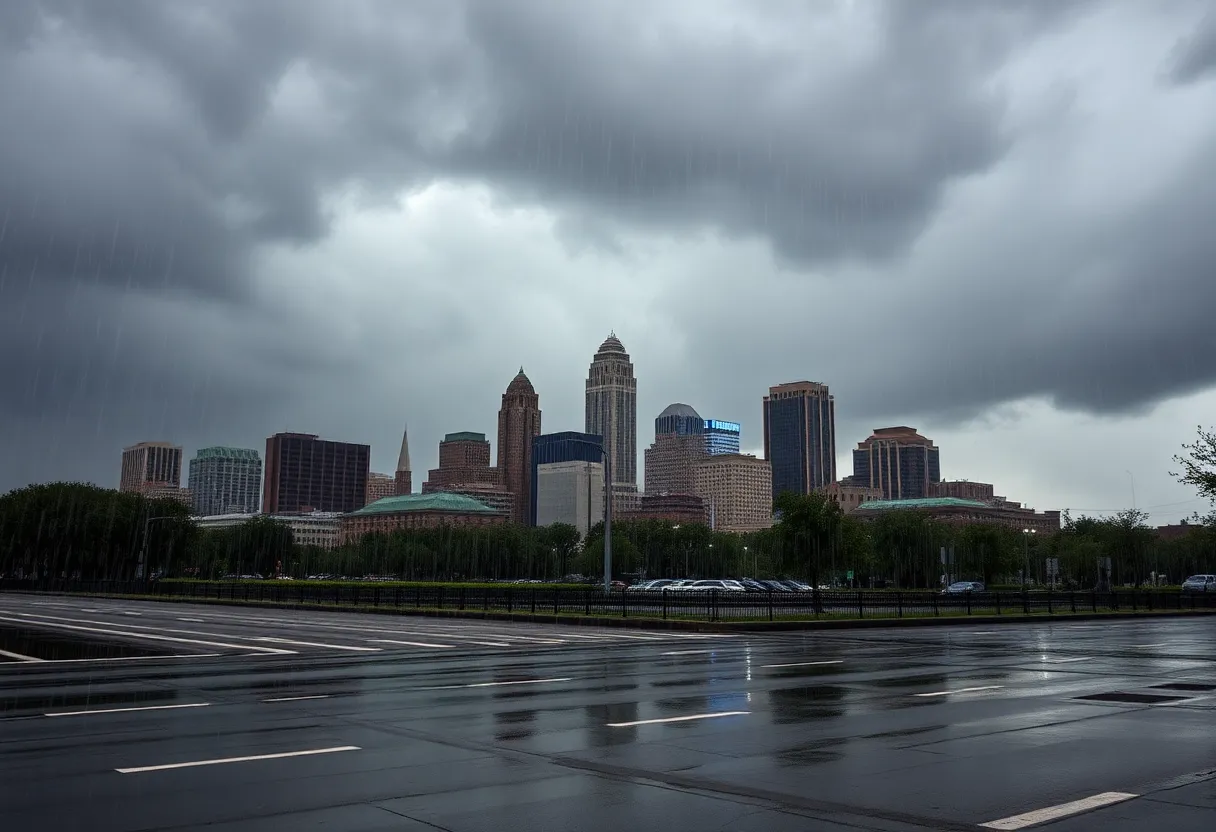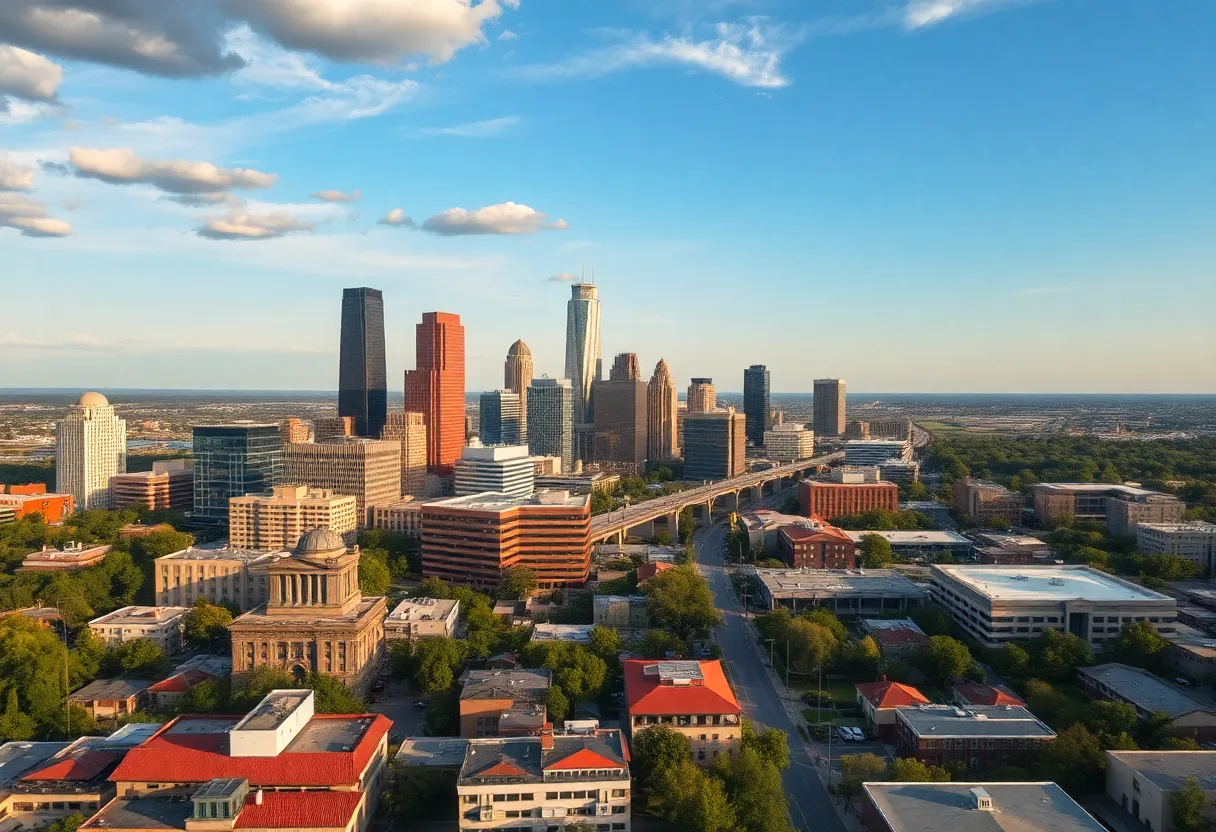News Summary
Recent studies indicate a significant increase in heavy rainfall across the United States, particularly in Austin, Texas, attributed to climate change. Since 1970, cities have experienced an average increase of 15% in hourly rainfall intensity, with Austin showing a 19% rise. This trend raises concerns about flash flooding and infrastructure damage. City planners and policymakers are urged to develop strategies to enhance resilience, including improving drainage and land use. Continued research and collaboration among stakeholders will be critical for future planning.
Austin Faces Increasing Heavy Rainfall Due to Climate Change
What Happened
Recent studies indicate that heavy downpours across the United States are becoming more intense due to climate change. The phenomenon enhances the natural water cycle, leading to increased rainfall rates, particularly in cities like Austin. Data analyzed by Climate Central from 144 cities has revealed a worrying trend: since 1970, 88% of these cities have experienced an average increase of 15% in hourly rainfall intensity.
Who Is Affected
The impact of increased rainfall does not discriminate; it affects urban areas, rural communities, and infrastructure alike. Austin, which has seen a 19% increase in hourly rainfall rates, ranks 94 out of 144 cities for heightened rainfall, placing it within the 65% of cities that have experienced increases of 10% or more. Residents face increased risks, including flash flooding and property damage. Historical data from 1996 to 2020 shows that heavy rains have resulted in significant economic losses of nearly $160 billion and approximately 2000 lives lost due to flooding events nationwide.
Official Response
In light of these findings, city planners and policymakers are being urged to develop strategies to mitigate the risks associated with heavy rainfall. These strategies may include improving drainage systems, enhancing green infrastructure to absorb excess rain, and reassessing land use around vulnerable areas. Government agencies are expected to take the information from such studies seriously as they plan for future urban development and emergency response initiatives.
Impact
The frequency and intensity of heavy rain events are projected to continue increasing in the coming years due to ongoing climate change. As May typically represents Central Texas’ wettest month, averaging 5.04 inches of rain, the additional moisture from the Gulf of Mexico plays a critical role. Consequences of heightened rain levels in Austin highlight not only the potential for flash flooding but also the longer-term challenges of urban resilience. Communities historically unaccustomed to such intense precipitation are now at greater risk.
What’s Next
Moving forward, it is crucial for cities like Austin to engage in planning that anticipates further increases in rainfall. Continued monitoring and research into precipitation trends will be essential. Collaboration among local governments, environmental organizations, and community stakeholders will help build resilience against the impacts of climate change. Policymakers are expected to advocate for funding and resources to upgrade infrastructure and improve drainage systems in response to the increasing rainfall metrics.
In summary, climate change is intensifying heavy rainfall in Austin and across the United States. The resultant increases in rainfall rates pose significant challenges, affecting lives, economies, and infrastructure. Acknowledging these trends is critical for future planning and resilience efforts as communities adapt to a wetter and more unpredictable climate.
Deeper Dive: News & Info About This Topic
HERE Resources
Austin Faces Increased Rainfall Intensity from Climate Change
Transportation Changes Raise Concerns for Austin ISD Schools
Severe Thunderstorms Cause Ruckus Across Western Washington
Austin to Address Rising Wildfire Risks Amid Drought
Austin Unveils Wildfire Risk Map Amid Rising Threats
Southern California Braces for Heavy Rainfall and Debris Flows
Severe Weather Outbreak Expected Across Central and Eastern U.S.
Severe Wildfire Risk in Central Texas: Stay Informed
Central Texas Experiences a Magical Winter Wonderland
Austin Faces Wildfire Risk: What You Should Know
Additional Resources
- KXAN Weather: Today’s Forecast
- Wikipedia: Climate Change
- Hoodline: Austin Thunderstorms
- Google Search: Austin Weather
- FOX 7 Austin: Heavy Rainfall
- Google Scholar: Heavy Rainfall Impact
- Express News: South Texas Rain
- Encyclopedia Britannica: Flash Flooding
- KXAN Weather: Hourly Rainfall Intensity
- Google News: Rainfall Intensity Increase








